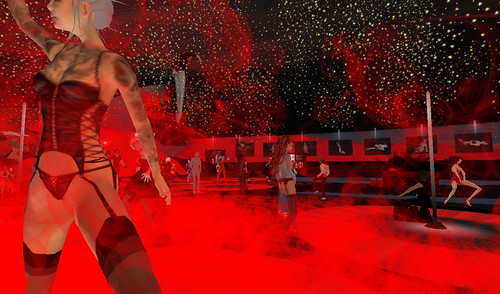Last week I
analyzed the highly successful Rouge opening, and this week we’ll examine another opening. One that you have never heard of.
While Codie’s Rouge sim opening’s purpose was to draw people in, have fun and make connections, this one has similar yet different objectives. But what is the sim, you ask? It’s the new island by RL insurance giant Aviva!
We’ve seen this before, where RL companies pop up an expensive "billboard", usually having little idea of the culture, needs and attitude of residents. They last for a short while and then declare their experiment concluded (this is code for: FAIL). Many companies have come and gone, wondering how anyone can make any money in a virtual world. Usually the only party making any money is the virtual construction consultants who assisted the RL company.
The Aviva experiment appears to be more of the same, but it is interesting to contrast their approach with Codie’s. You can read all about the Aviva opening
right here. To spare you from the reading the article, I’ve extracted the most interesting aspects.
Aviva’s objective is actually not to “make money” in the virtual world. Instead, their purpose is recruiting to replace aging sales reps on the verge of retirement. They are:
Looking for a unique and effective way to connect with members of the younger generations who have the potential to be effective insurance agents
Now, why would Aviva think this? Because they believe that:
If you look at [Second Life user] demographics not only by age, but by education, affluence, brand sensitivity and even the male/female splits, this certainly looked to us like it had the right demographics. There are, potentially, in the population of Second Life users, [many] that would be good life and annuity agents
Right. I am certain there must be some. But they are not on my friends list, perhaps they are on yours? Also, isn’t the average SL resident an aged 35+ married female? There’s more:
Our thought was that initially, since insurance is not something that is big in the Second Life world right now, ... the first and best use of this for us is as a means of attracting new, younger agents to sell our products
Sure. And what exactly would I expect to see on a visit to the Aviva sim?
the Aviva USA island's function is primarily one of information and education. The island has a welcome area and tutorial trail with five stations of information that introduce visitors to the island and its features. It also includes a commons building -- designed in a similar style to that of Aviva USA's new real-life headquarters in West Des Moines -- that features an area devoted to its Bright Futures national ad campaign, a wellness area with interactive surveys and a timeline history of the company
and
a replica of Aviva USA's wellness bus, which tours the country as part of the carrier's relationship with the Mayo Clinic, is stationed on the island. Visitors also can walk away from the island with Second Life in-world accessories for their online characters, or avatars, such as Aviva-branded hang gliders and messenger bags
That’s pretty nice. I’ll be looking to see the “messenger bags” on avatars during my travels, or perhaps even highlighted in the SL fashion blogs.
Suppose there actually are avatars who wish to become a “Life and Annuity Agent”. Should they drop by the island and get some information from the inevitable kiosks and notecard givers?
Second Life members can visit Aviva USA's island by invitation only... the company is looking to make sure that visitors to the island are legitimate and interested candidates to become Aviva USA-licensed agents
So the sim is actually closed to visitors! But wait, I
*really* want to be a “Life and Annuity Agent”. What do I do?
Potential agents can request an invitation by calling a toll-free Aviva phone number
Really? We wouldn’t want to make this any harder, would we? I’m wondering how a potential “Life and Annuity Agent” would discover an interest in that career
If They Can’t Even Get To The Island First!
Somehow I have a suspicion that this venture may not succeed:
If the company recruits around 500 per year through the initiative ... [they will] consider it very successful
That’s three recruits every two days for the entire year. Sigh. Only a small percentage of visitors would likely become recruits. The invitation procedure and significant absence of in-world marketing suggests few visitors are likely and that this expedition may not work out exactly as envisioned.
Bonne Chance, Aviva!
Pictures and
videos of the Aviva site are also available for your viewing pleasure.









 virtual business, building virtual products and exploring the virtual world.
virtual business, building virtual products and exploring the virtual world.